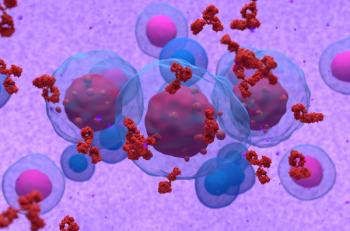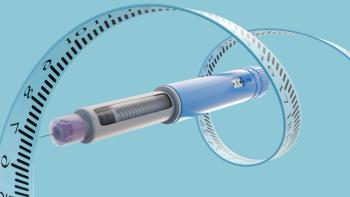
Pharmacy Practice in Focus: Oncology
- January 2025
- Volume 7
- Issue 1
Ribociclib and Inavolisib Approvals Highlight Advances in Breast Cancer Care
Key Takeaways
- Ribociclib and inavolisib received FDA approval for HR+/HER2- breast cancer, with ribociclib showing significant iDFS improvement in the NATALEE trial.
- Inavolisib demonstrated enhanced PFS in the INAVO120 trial, targeting PIK3CA mutations, with a focus on managing adverse effects.
Experts discuss advancements in hormone receptor–positive/HER2-negative breast cancer treatment while addressing safety, diversity, and fertility challenges.
At the 2024 San Antonio Breast Cancer Symposium in San Antonio, Texas, experts presented on the pivotal FDA approvals of ribociclib (Kisqali; Novartis) and inavolisib (Itovebi; Genentech, Inc.) for the treatment of patients with hormone receptor (HR)–positive/HER2-negative (HER2–) breast cancer. In their session, they discussed opportunities for treatment optimization, FDA approaches to breast cancer clinical trials, and addressing ovarian and reproductive toxicities, stressing the need for more data and mandates around fertility and embryonic development.1
Ribociclib is a selective cyclin-dependent kinase inhibitor that targets CDK4/6, which are overactivated proteins that drive cell cycle progression and cellular proliferation. It was originally approved in 2017 for the treatment of postmenopausal women with HR+/HER2– advanced or metastatic breast cancer based on results from the MONALEESA-2 clinical trial (NCT01958021). This indication was expanded in 2018 to include the approved use of ribociclib in combination with fulvestrant (Faslodex; AstraZeneca) and aromatase inhibitors in pre/perimenopausal women as initial endocrine therapy (ET).1-4
In 2024, ribociclib received another FDA approval based on data from the NATALEE trial (NCT03701334), a global phase 3 multi-center, open-label trial that included over 5000 patients with HR+/HER2– early breast cancer at high risk of recurrence across 20 countries. Of the trial participants, the majority were pre- and postmenopausal women with a median age under 60 years old; however, 19 men were enrolled. Most received prior lines of therapy and had node-positive (N1) stage 2 or 3 disease.1,5,6
Investigators randomized the patients 1:1 to receive either ribociclib (400 mg daily, 3 weeks on and 1 week off) plus a non-steroidal aromatase inhibitors (NSAIs) or placebo and an NSAI. The primary end point of the trial was invasive disease-free survival (iDFS) benefit as defined by the Standardized Definitions for Efficacy End Points (STEEP) criteria, with a key secondary end point of overall survival (OS).1,6
The data showed that patients receiving ribociclib and an NSAI achieved a statistically significant improvement in final iDFS of 90.4% (hazard ratio for invasive disease, recurrence, or death, 0.75; 95% confidence interval, 0.62 to 0.91; P=0.003) compared with those taking placebo. OS trended positively in favor of ribociclib, but these data were immature at the time of approval. The safety of ribociclib was consistent with existing clinical understanding, and adverse events included neutropenia, hepatobiliary toxicity, QT prolongation, and interstitial lung disease.1,7
The FDA approved ribociclib based on these results but required a post-marketing commitment to further evaluate OS and conduct an integrated analysis to ensure sufficient representation of racial and ethnic minorities, especially Black or African American patients.1
“The NATALEE trial was designed with 3 interim analyses,” explained Jennifer Gao, MD, medical oncologist and associate director for education in the Oncology Center of Excellence at FDA. "At interim analysis 3, the [iDFS] primary end point was statistically significant. However, at that time, only 20% of patients had completed their 3 years of adjuvant ribociclib, and there was, as a result, a high level of censoring. Due to these findings, the FDA requested that the NATALEE trial continue and that the final iDFS results be submitted to the FDA for review. At that final iDFS, 43% of patients had completed the 3 years of adjuvant ribociclib.”1
According to updated labeling information, ribociclib must be refrigerated at pharmacies and can be stored at room temperature for up to 2 months once dispensed to patients. It is contraindicated for use with moderate or strong CYP3A inhibitors, which can cause significant QT interval prolongation, potentially leading to a dangerous heart rhythm called Torsades de Pointes.1,8
Inavolisib is an oral therapy designed to reduce the adverse effects (AEs) of ET and provide well-tolerated, durable disease control by targeting activating PIK3CA mutations to restore the PIK3 pathway. In 2024, it was approved in combination with fulvestrant for the treatment of postmenopausal women, and men, with HR+/HER2–, PIK3CA-mutated advanced or metastatic breast cancer. The decision was based on data from the INAVO120 trial (NCT04191499), a randomized, double-blind, multicenter trial that enrolled 325 patients with endocrine-resistant, PIK3CA-mutated, HR+/HER2– locally advanced or metastatic breast cancer to receive inavolisib in combination with palbociclib (Ibrance; Pfizer) and fulvestrant or placebo with palbociclib and fulvestrant.9-11
Patients were randomized 1:1 to receive either inavolisib or placebo, administered orally on days 1 through 28 of each 28-day cycle. Palbociclib was administered orally on days 1 through 21 of each cycle, and fulvestrant was administered intramuscularly approximately every 4 weeks. The primary end point was progression-free survival (PFS) up to 3.7 years, with secondary end points including percentage of individuals with an objective response rate (ORR), best overall response rate, duration of response, and OS up to 6 years.11
The data demonstrated a median PFS of 15 months in the inavolisib arm and 7.3 months in the placebo arm, with an ORR of 58% versus 25% and a median duration of response of 18.4 months compared with 9.6 months, respectively. OS has not yet reached statistical significance. Dose modifications and discontinuations were more common in the inavolisib arm to manage hyperglycemia, diarrhea, and stomatitis.11
Similar to ribociclib, inavolisib also received a postmarketing commitment requirement from the FDA to evaluate a lower dose of inavolisib to potentially improve the safety profile and determine final OS results. Additionally, the FDA requested more comprehensive data on the use of the agent in diverse patient populations.1
When approving novel drugs and treatments, the FDA employs a rigorous, comprehensive approach to assessing trial data. Their determinations consider the safety and efficacy data, risk-benefit profiles, toxicities, and patient characteristics such as age, race, or disease stage. Additionally, the FDA ensures that the proposed labeling and prescribing information accurately reflect trial data.1
“We do look at the overall population, but also at various subgroups. For this particular trial, certainly the different anatomic group stages of patients who enrolled, including node-negative (N0), N1, and variations of high-risk definitions, were evaluated,” said Gao. “When we take an action on an indication, the statement in section one is very carefully worded to accurately reflect the enrolled patients and our independent analyses.”1
Mallorie Fiero, supervisor in the Office of Biostatistics at the FDA, emphasized the importance of subgroup evaluation to ensure consistent efficacy and safety across different populations.
“We want to make sure the patient population is sufficiently homogeneous. When we draw conclusions about the drug, we ensure it’s due to the drug and not differences or heterogeneity in the trial population.”1
The session also covered the importance of monitoring ovarian toxicity in clinical trials and the need for better data and guidance on the impact of chemotherapy on fertility. For example, data from the International Breast Cancer Study Group (IBCSG) Trial 8 demonstrated that premenopausal women lose approximately 3 years of menstrual life within 2 years after adjuvant chemotherapy, with many never recovering regular menstruation.1
Antonio Wolff, MD, professor of oncology at Johns Hopkins University, emphasized the long-term impact of ovarian toxicity. “Most patients with a new diagnosis of early-stage breast cancer will survive, but they will have to live with the consequences of our good intentions. We need to be careful about ovarian toxicity,” Wolff said.1
IBCSG Trial 8 compared the long-term efficacy of goserelin (Zoladex; AstraZeneca) with chemotherapy and chemoendocrine therapy for pre/perimenopausal women with N0 breast cancer. Results suggested that goserelin following chemotherapy offered protective potential for ovarian function compared with chemotherapy alone.1,12
When assessing the impact of cancer treatments on fertility, Wolff highlighted the importance of age-related factors, such as natural declines in gonadal function and trends in late childbearing.1
The FDA’s draft guidance, Assessment of Ovarian Toxicity: Developing Drugs for Nononcologic Indications and Preventable Causes in Adults, underscores the need for better monitoring and dedicated fertility studies, emphasizing the importance of understanding ovarian function over time.1
These advancements underscore the importance of robust clinical trial design, comprehensive data analysis, and FDA oversight to optimize therapeutic outcomes while addressing critical issues such as fertility and ovarian toxicity. As experts continue to explore novel approaches and refine existing treatments, the commitment to optimizing patient care, improving quality of life, and expanding health equity remains at the forefront.
REFERENCES
1. Kordestani L, Winer E, Gao J, et al. FDA special session: new drug approvals. 2024 San Antonio Breast Cancer Symposium. December 11, 2024. San Antonio, TX.
2. Ribociclib (Kisqali). FDA. March 13, 2017. Accessed December 11, 2024. https://www.fda.gov/drugs/resources-information-approved-drugs/ribociclib-kisqali#:~:text=On%20March%2013%2C%202017%2C%20the,hormone%20receptor%20(HR)%2Dpositive%2C
3. Study of efficacy and safety of LEE011 in postmenopausal women with advanced breast cancer (MONALEESA-2). ClinicalTrials.gov Identifier: NCT01958021. Updated April 26, 2024. Accessed December 11, 2024. https://clinicaltrials.gov/study/NCT01958021
4. FDA expands ribociclib indication in HR-positive, HER2-negative advanced or metastatic breast cancer. FDA. July 18, 2018. Accessed December 11, 2024. https://www.fda.gov/drugs/resources-information-approved-drugs/fda-expands-ribociclib-indication-hr-positive-her2-negative-advanced-or-metastatic-breast-cancer
5. A trial to evaluate efficacy and safety of ribociclib with endocrine therapy as adjuvant treatment in patients with HR+/HER2- early breast cancer (NATALEE). ClinicalTrials.gov Identifier: NCT03701334. Updated November 14, 2024. Accessed December 11, 2024. https://clinicaltrials.gov/study/NCT03701334
6. FDA approves ribociclib in combination with an aromatase inhibitor for HR+/HER2- early breast cancer. Pharmacy Times. September 17, 2024. Accessed December 11, 2024. https://www.pharmacytimes.com/view/fda-approves-ribociclib-in-combination-with-an-aromatase-inhibitor-for-hr-her2--early-breast-cancer
7. Slamon D, Lipatov O, Nowecki Z, et al. Ribociclib plus endocrine therapy in early breast cancer. N Engl J Med. March 20, 2024. doi: 10.1056/NEJMoa2305488
8. ribociclib (Rx). Medscape. Accessed December 11, 2024. https://reference.medscape.com/drug/kisqali-ribociclib-1000154#92
9. FDA grants inavolisib priority teview for treatment of PIK3CA-mutated breast cancer. Pharmacy Times. May 31, 2024. Accessed December 11, 2024. https://www.pharmacytimes.com/view/fda-grants-inavolisib-priority-review-for-treatment-of-pik3ca-mutated-breast-cancer
10. A study evaluating the efficacy and safety of inavolisib + palbociclib + fulvestrant vs placebo + palbociclib + fulvestrant in patients with PIK3CA-mutant, hormone receptor-positive, her2-negative, locally advanced or metastatic breast cancer (INAVO120). ClinicalTrials.gov Identifier: NCT04191499. Updated October 9, 2024. Accessed December 11, 2024. https://clinicaltrials.gov/study/NCT04191499
11. FDA approves inavolisib with palbociclib and fulvestrant for breast cancer. Pharmacy Times®. October 10, 2024. Accessed December 11, 2024. https://www.pharmacytimes.com/view/fda-approves-inavolisib-with-palbociclib-and-fulvestrant-for-breast-cancer
12. Karlsson P, Braun D, Price K, et al. Long-term results of International Breast Cancer Study Group Trial VIII: adjuvant chemotherapy plus goserelin compared with either therapy alone for premenopausal patients with node-negative breast cancer. Ann Oncol. February 16, 2011. doi:10.1093/annonc/mdq735
Articles in this issue
Newsletter
Stay informed on drug updates, treatment guidelines, and pharmacy practice trends—subscribe to Pharmacy Times for weekly clinical insights.
















































































































































































































